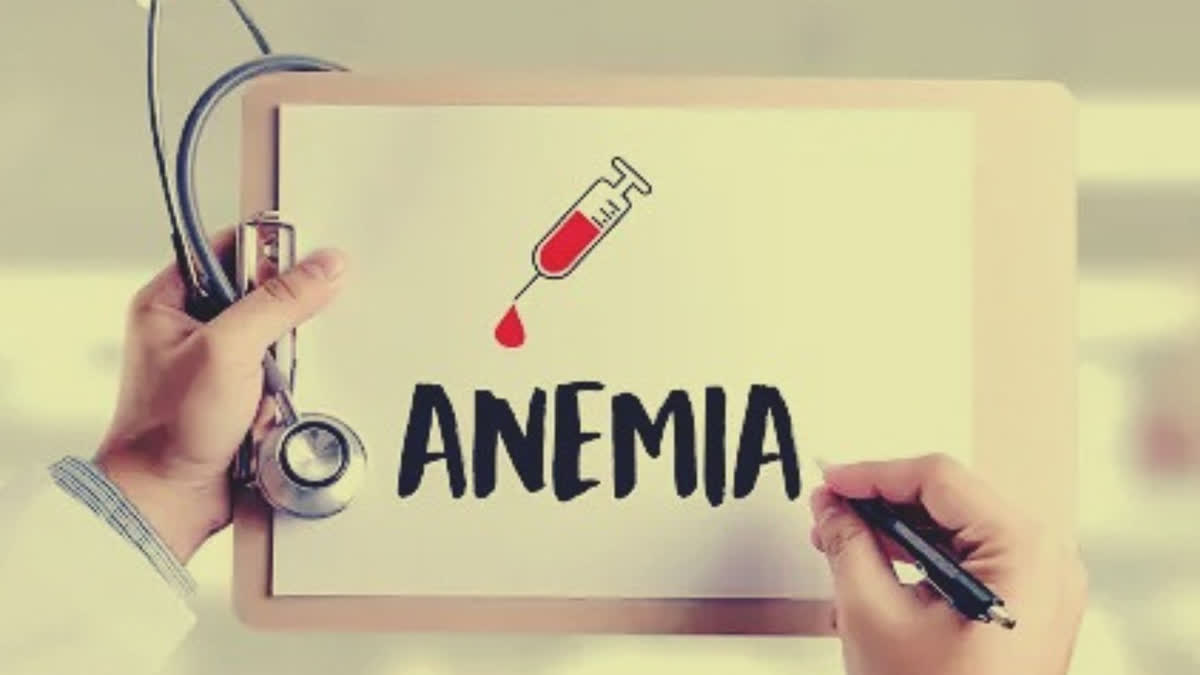New York : One-fourth of the global population is estimated to be anaemic, with cases increasing rapidly for women, expectant mothers, young girls, and children younger than age 5, according to a study spanning three decades published in The Lancet Haematology. In 2021, 1.92 billion people globally had anaemia -- an increase of 420 million cases since 1990. In 2021, sub-Saharan Africa and South Asia had the most cases.
Yet the study conducted by the US-based Institute for Health Metrics and Evaluation (IHME), shows a global shift toward less severe anaemia between 1990 and 2021. While large decreases were seen in adult males, slower rates of progress were found among women of reproductive age and children younger than age 5. Globally, in 2021, 31.2 per cent of women had anaemia compared with 17.5 per cent of men. The gender difference was more pronounced during the reproductive years (ages 15-49), where anaemia prevalence in women was 33.7 per cent versus 11.3 per cent in men.
“Over the years, there’s been a lot of focus on reducing anaemia globally, but as a group, women and children have shown the least progress,” said lead author Will Gardner, researcher at IHME.
This is a nuanced situation that revolves around access to nutrition, socioeconomic status, unmet need for contraception, and the ability to identify and treat underlying causes of anaemia. “Our data show how one group -- adult men -- has fared much better than two other groups, women (ages 15-49) and children younger than 5 years. This speaks to the need for a shift to multi-sectoral approaches and improved cultural awareness to make sure women and children are not left behind,” Gardner said.
Anaemia -- a problem of not having enough healthy red blood cells or haemoglobin to carry oxygen to the body's tissues -- is the third-leading cause of years with lived disability (YLDs) in the world. Further, the study modelled 37 underlying causes for anaemia. Iron deficiency, constituting 66.2 per cent of total anaemia cases, was the leading cause of anaemia in 2021.
It affected 825 million women and 444 million men globally. Inadequate intake of iron may have been the single most common cause of anaemia, but many other conditions are major drivers of anaemia. The study found that gynaecological disorders and maternal haemorrhage were important contributors to anaemia burden among women of reproductive age.
For children younger than 5 years, the main cause of anaemia was dietary iron deficiency, but hemoglobinopathies, other infectious diseases, HIV/AIDS, and malaria were also important contributors in geographic locations where these diseases are prevalent. “For many young women and girls, there’s an education gap about blood loss during menstruation, inadequate options for effectively managing menstrual problems in those who have them, and not enough knowledge about how to manage and/or reverse anaemia when it occurs," said Dr. Theresa McHugh, scientific writer at IHME who focuses on neonatal and child health.
"We know anaemia can impact mental health because the associated weakness and fatigue can interfere with desired activities,” she added. The research also showed sub-Saharan Africa and South Asia are currently facing the greatest burden. In 2021, Western sub-Saharan Africa (47.4 per cent), South Asia (35.7 per cent), and Central sub-Saharan Africa (35.7 per cent) had the highest anaemia prevalence. The regions with the lowest anaemia are Australasia (5.7 per cent), Western Europe (6 per cent), and North America (6.8 per cent). (IANS)
